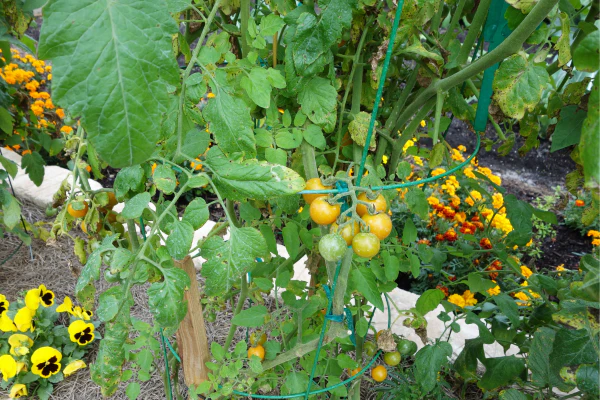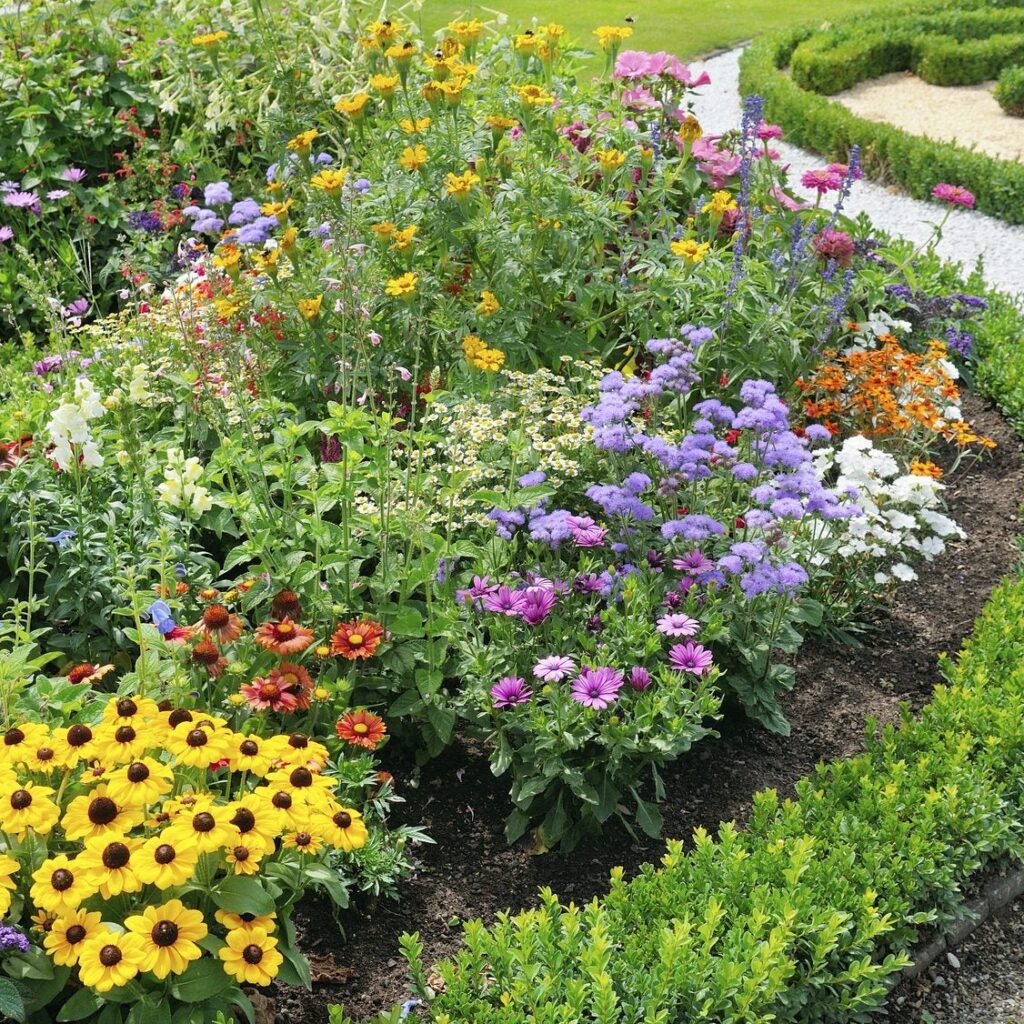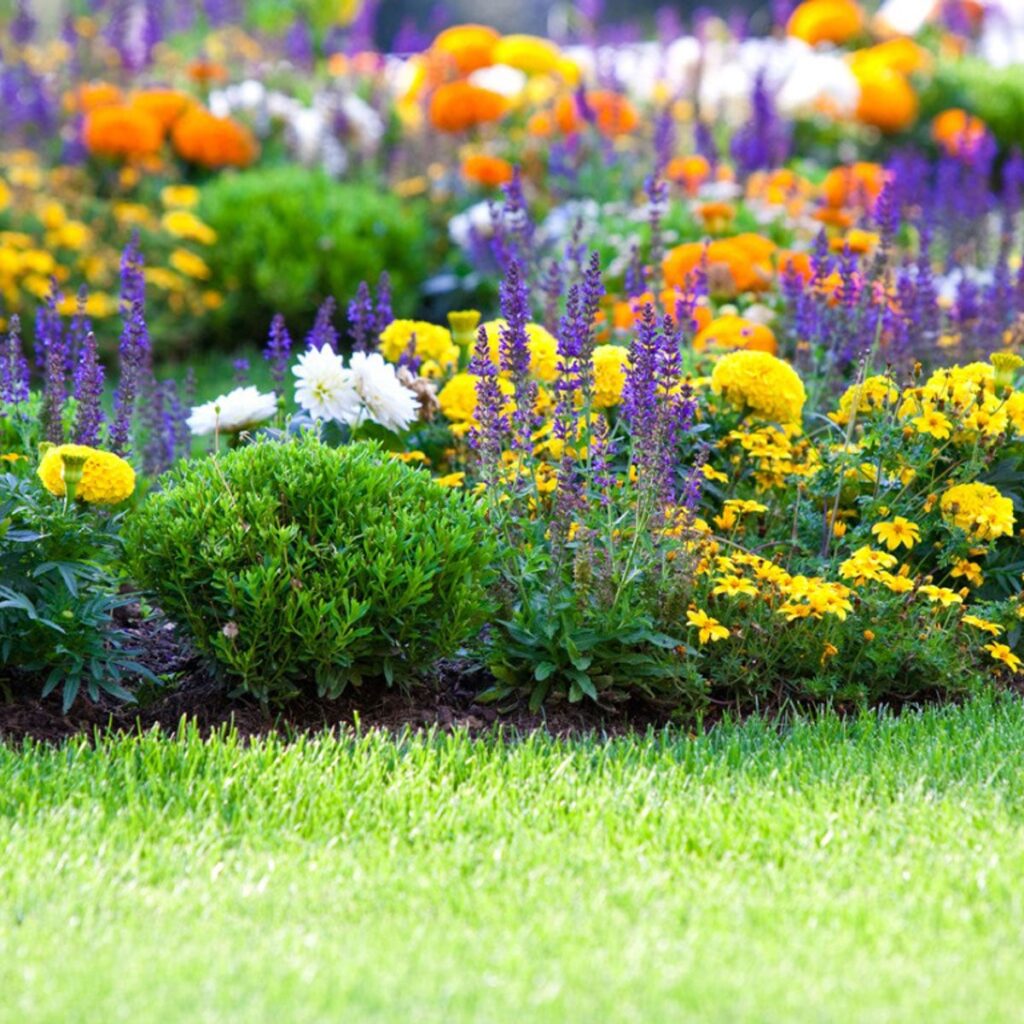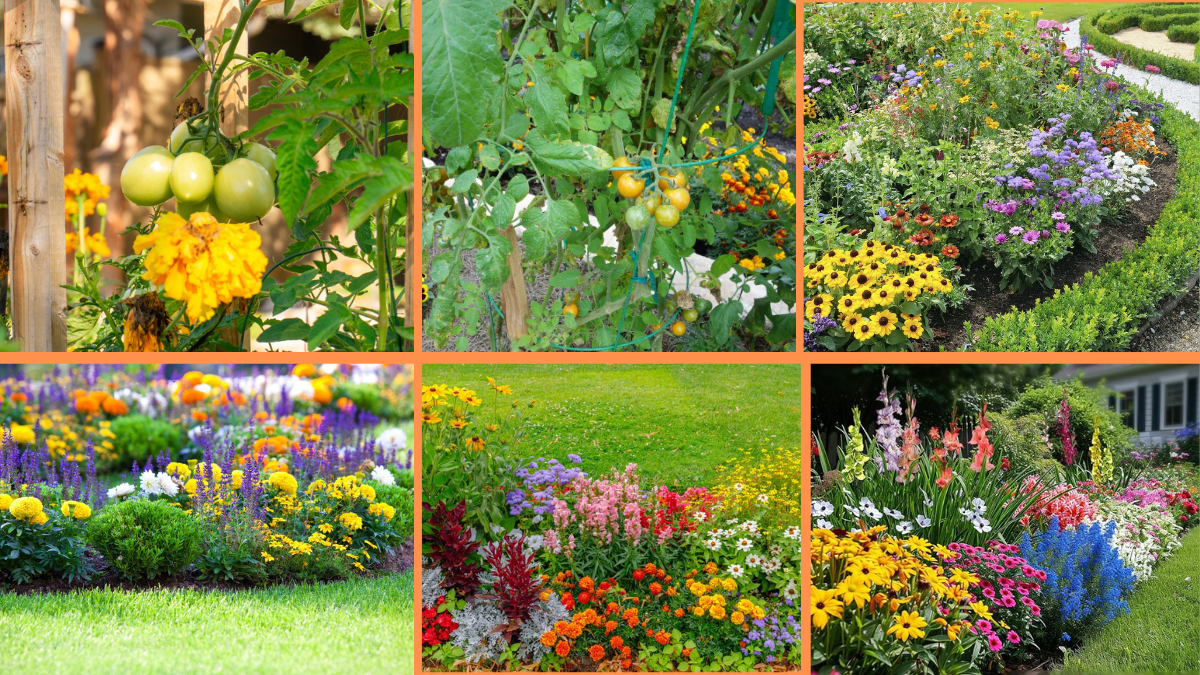If you’ve ever wondered how to naturally improve your flower garden’s health, deter pests, and encourage stronger, more colorful blooms, the secret might be hiding right next to your plants. It’s called companion planting — an age-old gardening technique where specific plants are grown together to support and benefit each other.
While companion planting is often associated with vegetable gardens, it works beautifully for flowers too. By thoughtfully pairing flowers with other flowers, herbs, or foliage plants, you can create a visually stunning garden that thrives naturally.
In this article, we’ll dive into what companion planting is, why it matters for flowers, and share 10 effective tips to help you use companion planting in your garden like a pro.

What Is Companion Planting for Flowers?
Companion planting is the practice of growing different plants together because they enhance each other’s growth, repel pests, attract beneficial insects, or improve soil health. In flower gardens, it’s a fantastic way to:
- Enhance bloom quality and longevity
- Control pests without chemicals
- Attract pollinators like bees and butterflies
- Improve soil nutrients
- Fill your garden with color and texture year-round
Whether you’re growing annuals, perennials, or flowering shrubs, using the right plant companions can make a big difference.

10 Companion Planting Tips for Beautiful and Balanced Flower Gardens

1. Pair Flowers That Attract Pollinators with Those That Need Help
Some flowers are pollinator magnets, while others may struggle to attract bees and butterflies on their own. By planting these together, you boost pollination and encourage more blooms.
Great Pairing Example:
- Zinnias, Cosmos, and Coneflowers with vegetables or flowers like Snapdragons or Petunias that need extra pollinator visits.
Tip: Plant pollinator favorites in clusters to make them easier for bees and butterflies to spot.

2. Use Marigolds as Natural Pest Control
Marigolds are famous for their ability to repel common garden pests like aphids, nematodes, and whiteflies. Planting them alongside other flowers not only adds vibrant color but also acts as a natural shield.
Best Companions:
- Roses (protects against aphids)
- Petunias
- Salvia
- Calendula
Bonus: French Marigolds are particularly good at deterring soil nematodes.

3. Combine Flowers with Complementary Growth Habits
Mixing tall, medium, and low-growing flowers together creates visual interest and helps plants support each other naturally. Tall plants provide shade for heat-sensitive companions and create a windbreak.
Example Planting:
- Tall: Delphiniums, Hollyhocks
- Mid: Geraniums, Coreopsis
- Ground Cover: Sweet Alyssum, Lobelia
Tip: Layering your flowers this way adds depth, color variety, and practicality to your garden beds.

4. Pair Aromatic Herbs with Flowers for Added Benefits
Certain herbs not only smell amazing but can deter pests and attract pollinators when planted near flowers. They also improve soil health and protect blooms from fungal diseases.
Smart Companions:
- Lavender, Basil, and Mint near Roses to repel aphids and beetles.
- Thyme and Oregano near Marigolds and Geraniums for added protection against harmful insects.
Note: Some herbs can spread aggressively, so consider planting them in containers if needed.
5. Choose Companion Flowers That Share the Same Light and Soil Needs
For successful companion planting, flowers should have similar sunlight, watering, and soil requirements. This ensures all plants in the group thrive without one suffering.
Good Matches:
- Shade lovers: Astilbe, Bleeding Heart, and Hosta
- Sun seekers: Sunflowers, Zinnias, and Black-eyed Susans
Tip: Group plants into “sun teams” and “shade teams” to make maintenance easier.
6. Attract Beneficial Insects to Control Pests Naturally
Companion flowers like Sweet Alyssum, Yarrow, and Cosmos attract beneficial insects such as ladybugs, lacewings, and hoverflies. These natural predators feast on harmful pests like aphids, mites, and caterpillars.
Companion Planting Idea:
Surround vegetables or delicate blooms like Dahlias with Sweet Alyssum to lure in ladybugs that will help keep aphids in check.
7. Use Trap Crops to Protect Precious Blooms
Some flowers can act as decoys (trap crops), drawing harmful insects away from your prized blooms.
Example:
- Nasturtiums attract aphids, keeping them off your Roses, Cosmos, and Snapdragons.
Tip: Plant trap flowers a short distance away from the main flowerbed to lure pests without risking your showier blooms.
8. Incorporate Companion Planting for Better Soil Health
Certain flowers and plants improve soil health naturally. For example, legumes like Sweet Peas fix nitrogen in the soil, benefiting nearby flowers that thrive on nitrogen-rich earth.
Ideal Companions:
Plant nitrogen-fixers like Sweet Peas alongside heavy feeders like Dahlias and Marigolds to enrich the soil.
Bonus: Regularly rotate these plants through your beds to maintain balanced soil fertility.
9. Blend Seasonal Blooms for Continuous Color
Companion planting isn’t just about pest control and soil health — it can help ensure your garden stays colorful throughout the year. Pair flowers with staggered blooming periods to keep beds lively.
Example Planting:
- Early Spring: Pansies, Primroses
- Summer: Petunias, Zinnias
- Fall: Chrysanthemums, Asters
Tip: Intermix annuals and perennials for year-round color and texture.
10. Think Beyond Flowers: Add Foliage Companions
Sometimes it’s not about the flowers alone. Adding foliage plants with striking leaves, like Coleus, Heuchera, or Ferns, can enhance the colors of your blooms and fill gaps when flowers aren’t in bloom.
Tip: Use bold foliage to contrast with delicate flowers or mix silver and variegated leaves to brighten shaded corners.
Final Thoughts
Companion planting for flowers isn’t just a smart gardening strategy — it’s a creative, natural, and rewarding way to design a healthy, balanced, and beautiful flower garden. Whether you want to deter pests, attract pollinators, improve soil, or simply enjoy continuous color, these 10 tips will help you make the most of your garden space.
By observing how different plants support one another and experimenting with combinations, you’ll develop a deeper connection to your garden and create an ecosystem where your flowers flourish together in harmony.





